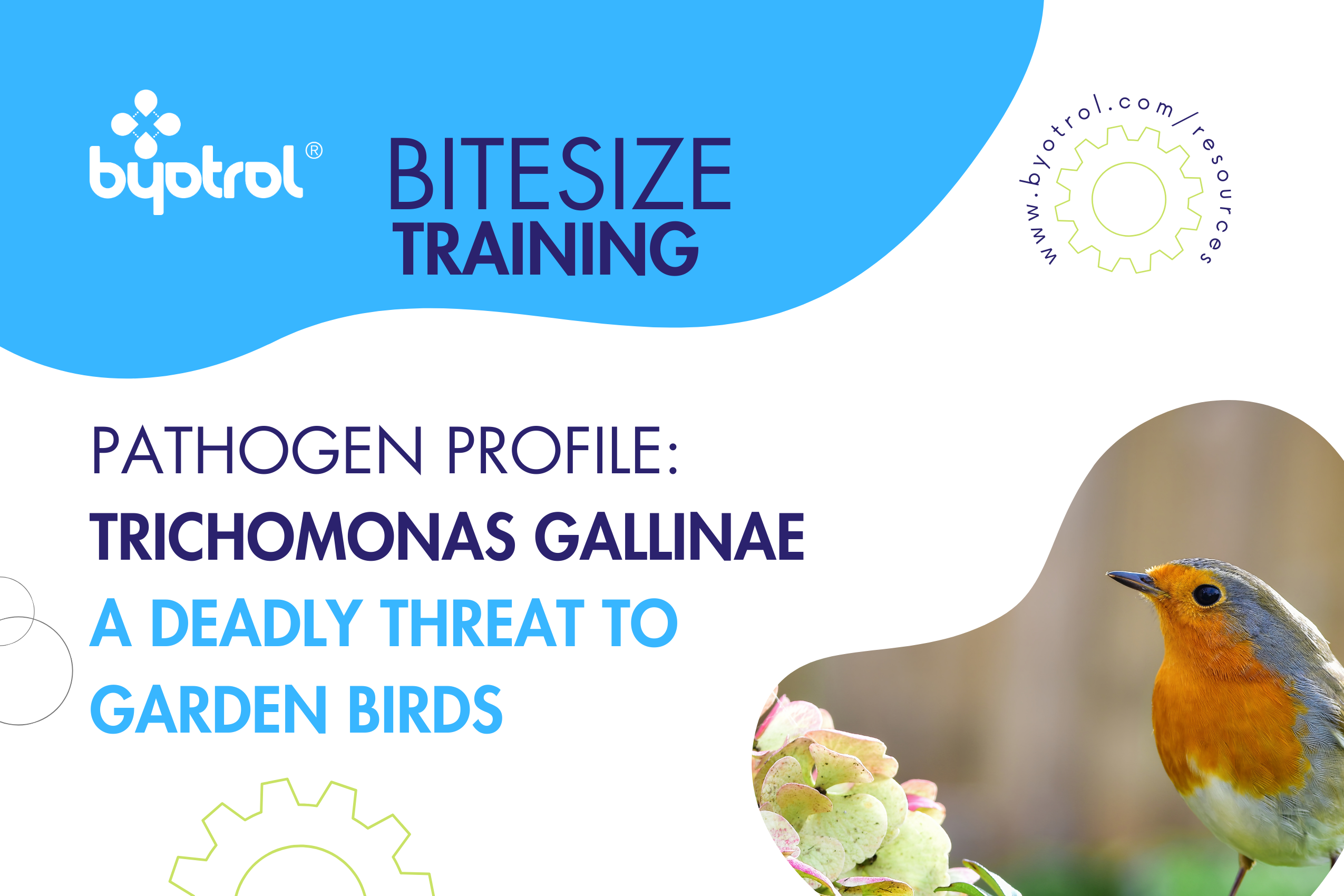Understanding Trichomonas gallinae: A Threat to Garden Birds
Trichomonas gallinae is a protozoan parasite which causes Trichomonosis, also known as “canker” in pigeons and “frounce” in birds of prey. Trichomonosis is a common and serious infectious disease that affects a variety of bird species, particularly garden birds such as finches and doves, that can have devastating effects on bird populations if not properly managed.
What is Trichomonas gallinae?
Trichomonas gallinae is a protozoan parasite that infects the upper digestive tract of birds, particularly the crop and oesophagus. The infection, known as Trichmonosis, leads to the development of lesions which can obstruct the passage of food, making it difficult or impossible for affected birds to eat. In severe cases, this can lead to starvation and death.
The disease is highly contagious and spreads mainly through direct contact with infected birds, contaminated food, and water sources. Birds can also contract the disease by consuming food regurgitated by an infected parent or mate, a common behaviour among many bird species.
Who’s at Risk?
Trichmonosis has resulted in epidemic mortality in Greenfinches and Chaffinches across the British Isles. A new study, which uses data from GBW, GBFS and BBS, shows that the British population of breeding Greenfinches has fallen from approximately 4.3 million to 2.8 million birds since the disease’s emergence in 2005, and that the number of Greenfinches visiting gardens has also halved during this time. Chaffinches have been less severely affected.
Trichomonosis initially took hold in central and western parts of England and Wales, before spreading east and north into Scotland from 2007 onwards. Incidences were reported in Ireland from autumn 2007. This geographical expansion is thought to have occurred with the seasonal movements of infected individuals.
The study’s authors suggest that Trichomonosis might have been transmitted to finches from Woodpigeons. Pigeon and dove populations are traditional reservoirs of this parasite and, as they have similar food preferences, the spill-over from Woodpigeons to finches, and subsequent transmission between finches, could have taken place at shared feeding sites. This study has important implications for managing the on-going impact of the finch Trichomonosis epidemic, and for assessing the likely effect of any future wildlife disease outbreaks.
Symptoms to Watch For
The symptoms of Trichomonosis include:
- Swollen neck and throat
- Difficulty swallowing
- Excessive salivation or froth around the mouth
- Poor body condition
- Listlessness
If you notice birds exhibiting these symptoms around your feeders, it’s important to take immediate action to prevent the spread of the disease.
Practical Advice on Preventing Outbreaks
Managing the transmission of Trichomonas gallinae involves a combination of good hygiene practices and vigilance. As a protozoan parasite, Trichomonas gallinae can be highly resistant to disinfectants and therefore requires a more aggressive solution such as chlorine tablets. Here are some practical steps you can take to protect garden birds from this disease:
Clean Feeders Regularly: Disinfect bird feeders and feeding areas at least once a week with a solution specifically designed for veterinary surface disinfection, such as ANIGENE Professional Chlorine Tablets. Ensure all feeding equipment is thoroughly rinsed and dried before being refilled.
Avoid Ground Feeding: If possible, avoid feeding birds directly on the ground where infected droppings can easily contaminate food. Elevated feeders reduce the risk of disease spread among ground-feeding birds.
Remove Leftover Food: Regularly remove any uneaten or spoiled food from feeders. Decaying food can be a breeding ground for parasites like Trichomonas gallinae.
Limit Water Contamination: Change water in birdbaths daily and clean them regularly to prevent contamination. Birdbaths and water feeders can be transmission hotspots for Trichomonas gallinae.
Isolate Infected Birds: While it’s not always feasible to isolate wild birds, be mindful of any sick birds and remove feeders for two weeks to prevent disease transmission to healthy individuals.
Educate Others: Share resources to increase awareness of Trichomonas gallinae and encourage others to follow good hygiene practices with their feeders. Education is a powerful tool in preventing outbreaks.
Conclusion
While Trichomonas gallinae represents a serious threat to garden birds, proactive management and hygiene practices can significantly reduce the risk of outbreaks. By maintaining clean feeding and watering sites, and being vigilant for signs of illness, bird enthusiasts can help protect these valuable creatures. Remember, healthy bird populations contribute to a balanced ecosystem and enhance the natural beauty of our surroundings. For further information and guidance, organisations like the British Trust for Ornithology (BTO) and the Royal Society for the Protection of Birds (RSPB) offer resources and support for those looking to make a difference in bird conservation.
